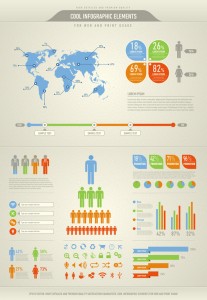Nov
06

Posted by nnlmneo on November 6th, 2015
Posted in: Data Visualization
Tags: vector graphics
 The Medical Library Association’s October 28 webinar was on Data Visualization, presented by Lisa Federer, NIH Library’s Research Data Informationist. The webinar was a tour of different aspects of data visualization, including information about elements of design, like color, line, contrast and proximity, as well as loads and loads of specific resources for more information.
The Medical Library Association’s October 28 webinar was on Data Visualization, presented by Lisa Federer, NIH Library’s Research Data Informationist. The webinar was a tour of different aspects of data visualization, including information about elements of design, like color, line, contrast and proximity, as well as loads and loads of specific resources for more information.
For those of you who were not able to attend or would like to know more, Lisa Federer has a LibGuide called Creating Infographics with Inkscape, which contains the resources for a class she taught with NIH Informationist Chris Belter. The LibGuide includes a Power Point from the lecture part of their class. The slides cover design principles and design elements. Many of the slides have links to resources that you can use to learn more about the topic. For example:
Vischeck – a cool tool for finding out what your colors in your chart look like to someone who is color blind
10 Commandments of Typography – suggestions for making font combinations that work
The second part of the class is a hands-on section on using Inkscape, a free, open-source graphics program, to make infographics. Inkscape allows you to use “vector graphics” to design infographics. What are vector graphics and why use them? You know images that work when they’re small but get all blurry when they get big? Those images are based on pixels. Vector graphics are based on pathways defined by mathematical expressions like lines, curves, and triangles, so they can get larger and smaller without losing any quality. Sounds hard to do, right? Luckily there are tutorials on Inkscape and it’s easier than you might think (you don’t need to know the math…): https://inkscape.org/en/doc/tutorials/basic/tutorial-basic.en.html
If you want to take a look at other vector graphics editors, there are other free ones, like Apache Open Office Draw, or ones you may already own, like Adobe Illustrator. Comparisons with links to detailed information can be found in Wikipedia’s “Comparison of Vector Graphics Editors.”